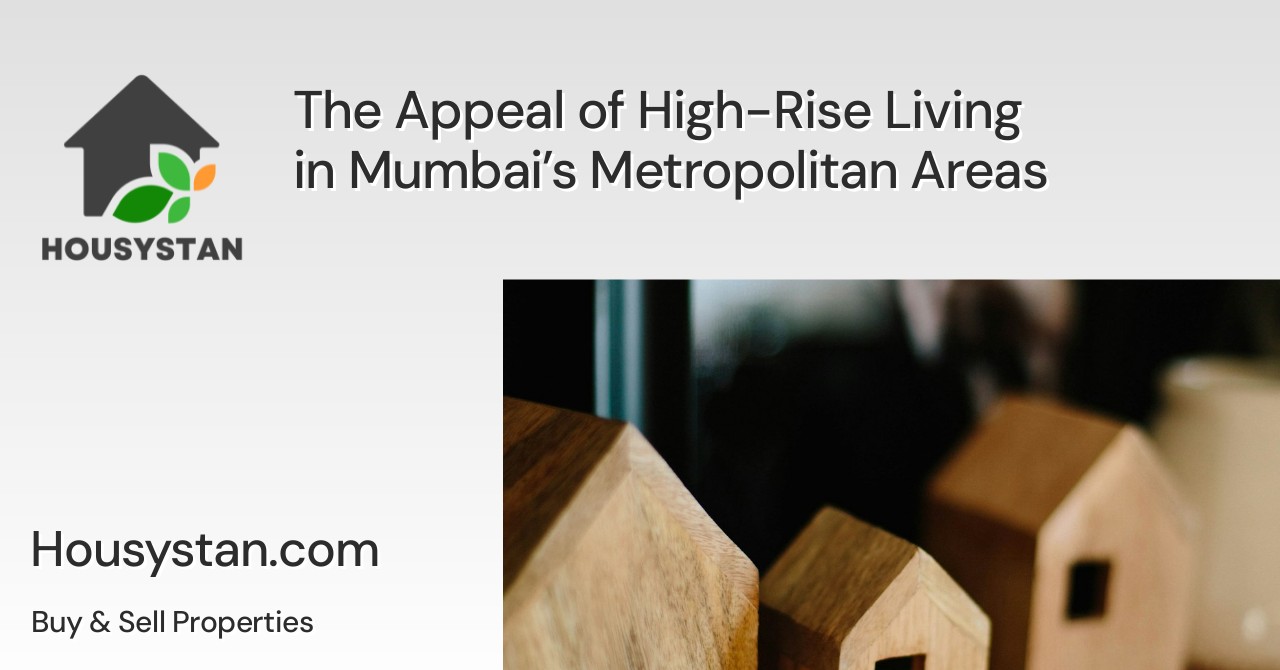The Appeal of High-Rise Living in Mumbai’s Metropolitan Areas
Read latest blogs and articles from Housystan

The Information mentioned here was last updated on:
4/12/2025High-rise living in Mumbai’s metropolitan areas has become increasingly desirable, attracting both residents and investors seeking a dynamic urban lifestyle. The city’s ever-evolving skyline, dotted with impressive skyscrapers, reflects Mumbai’s rapid growth and modernization. These vertical communities offer a distinctive blend of luxury, convenience, and panoramic views, making them a favored choice for those who want to experience the heart of India’s financial capital.
One of the primary reasons homebuyers are drawn to high-rise apartments in Mumbai is the breathtaking vistas. Residents can enjoy sweeping views of the Arabian Sea, lush city gardens, and the vibrant cityscape from their balconies, a rare experience in densely populated urban environments. This elevated perspective also provides a sense of peace and privacy, distancing occupants from the hustle and bustle at street level.
Modern high-rise towers in Mumbai are designed with state-of-the-art amenities to cater to every lifestyle need. Facilities such as infinity pools, fitness centers, landscaped terraces, and dedicated play zones enhance daily living. Many buildings integrate smart security systems, round-the-clock surveillance, and concierge services, ensuring safety and convenience for all residents. These features contribute significantly to the appeal of high-rise living, especially for families and professionals seeking a secure urban environment.
- Verified Tenants/Buyers
- Unlimited Property Listing
- Zero subscription/charges fee
Connectivity is another major advantage of residing in Mumbai’s high-rise communities. Most towers are strategically located near major business districts, educational institutions, healthcare centers, and entertainment hubs. Seamless access to the city’s extensive transport network, including local trains, metros, and highways, makes commuting effortless for professionals and students alike. This central location reduces travel time and increases productivity, further boosting the allure of vertical living.
Investing in high-rise properties in Mumbai also offers long-term value. The demand for premium residences continues to rise, driven by the city’s expanding population and economic prospects. Real estate in prime metropolitan areas tends to appreciate steadily, making high-rise apartments an attractive asset for investors seeking both rental income and capital growth.
Ultimately, high-rise living in Mumbai’s metropolitan neighborhoods delivers an unmatched combination of luxury, convenience, and strategic location. These sophisticated dwellings provide residents with a superior lifestyle and strong investment potential, reinforcing Mumbai’s reputation as a premier destination for urban living.